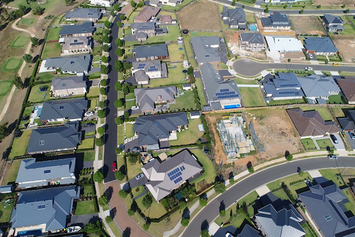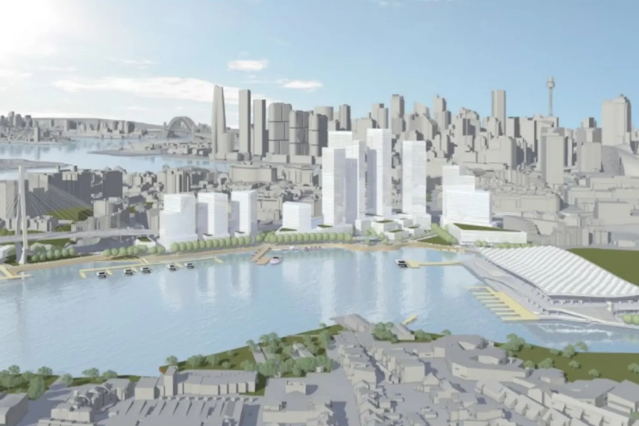
Recently on Twitter I came across a post about the NSW Panning Minister's announcement banning dark roofing for detached houses in fringe housing estates to minimise the heat island effect. Scrolling down the comments, I noticed one by the Sydney Morning Herald’s anti-suburban architecture critic, Elizabeth Farrelly. “It’s ludicrous that this greenfield sprawl is still being approved in Sydney”, she wrote. Having just read a column of hers slamming the proposed high-rise tower complex for inner-city Pyrmont’s Fish Market site, it was amusing to see her bash the other end of the spectrum. Where would Farrelly have people live?

Proposed Fish Market site development, Pyrmont-Blackwattle Bay (Infrastructure NSW)
I knew, in fact, that she quests for the holy grail of urbanists everywhere, medium-density or the so-called “missing middle”. Since there is a body of commentary explaining why this form of development struggles to materialise – the NSW Government’s Low-Rise Diversity Code has foundered on a combination of flawed economic logic and popular resistance − Farrelly’s preferences add up to no housing at all. I decided to reply (hazarding the limited space on Twitter) and this exchange followed:
Elizabeth Farrelly @emfarrelly
Aug 24: It’s ludicrous that this greenfield sprawl is still being approved in Sydney.
The New City @The_New_City
Aug 24: You don’t like vertical high-rise like the Fish Market development, you don’t like horizontal “sprawl”, you don’t explain how medium density is economically viable.
Elizabeth Farrelly @emfarrelly
Aug 24: Replying to @The_New_City: It’s viable in London, San Francisco, Amsterdam, even Auckland. Why not here?
The New City @The_New_City
Aug 24: For historical-geographical reasons the radius of our dense inner-city is comparably small so low-density suburbia starts closer in. These middle parts are still relatively close to the centre so land values are very high and profitable redevelopment would need to be intensive.
Elizabeth Farrelly @emfarrelly
Aug 24: Replying to @The_New_City: As to the fish market development, that’s private development on public land, with no public benefit. Why would that be a good model?
The New City @The_New_City
Aug 24: Replying to @emfarrelly: It’s not so good a model, suburbanisation is a better model. But fish market is the type of development (mostly on private rather than public land) we will end up with if suburban “sprawl” is blocked.
Elizabeth Farrelly @emfarrelly
Aug 25: Those are the extremes. They’re not the only choices – and it’s silly to presume that they are.
The New City @The_New_City
Aug 25: Good luck with your other choices.
And there it seemed to end – but it didn’t. Farrelly pursued the exchange, this time as a monologue in her Herald column of 4 September. She starts off rebuking the planning minister for the “classic misdirection” of banning dark roofs when “we should not be approving greenfield sprawl at all”. Then comes this:
Read the rest of this piece at The New City Journal Blogspot.
John Muscat is a real estate professional in Australia, having over three decades of experience in the industry.
Photo: Wilton housing estate, western Sydney (ABC Illawarra), republished from The New City Journal.












